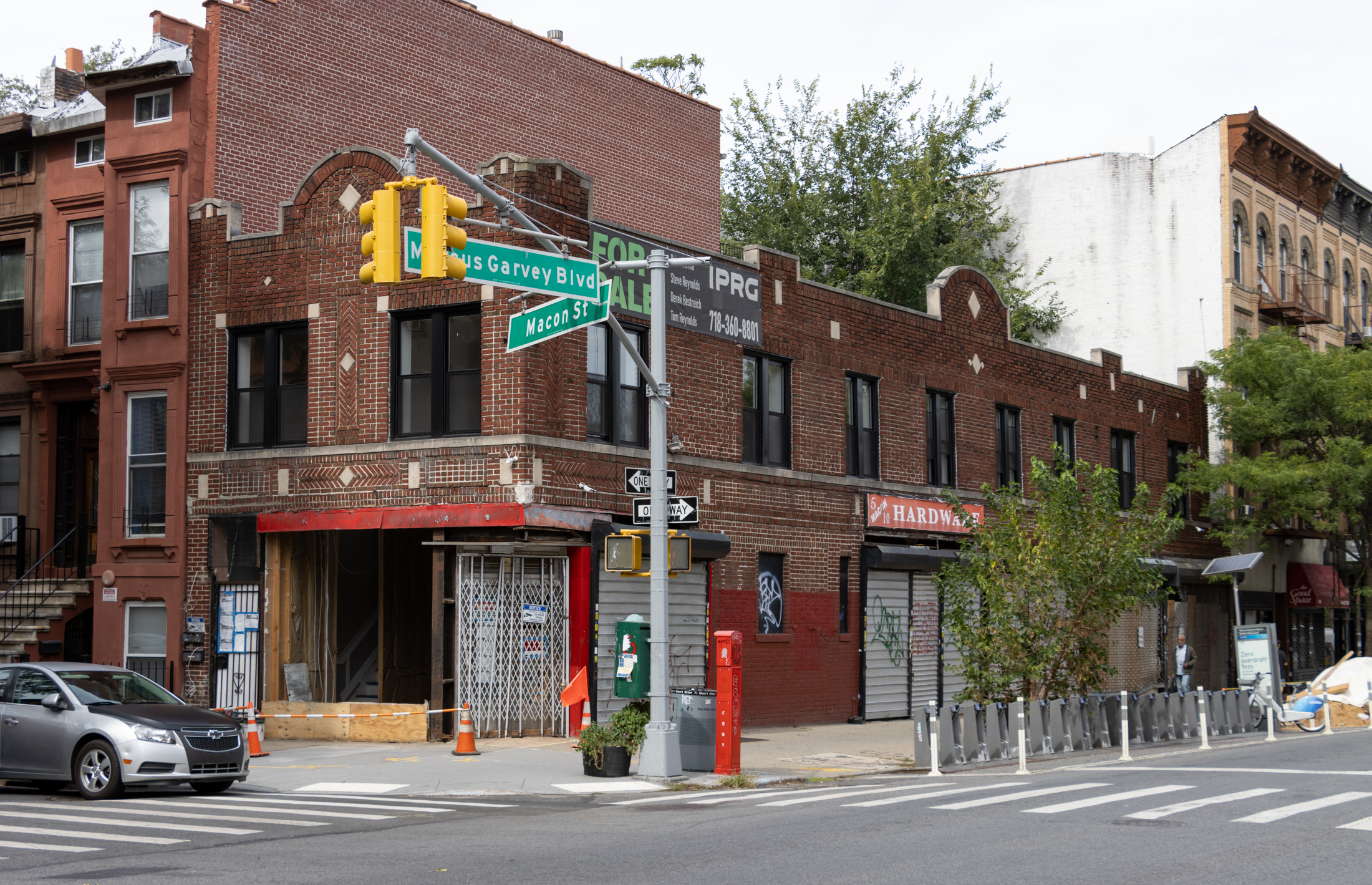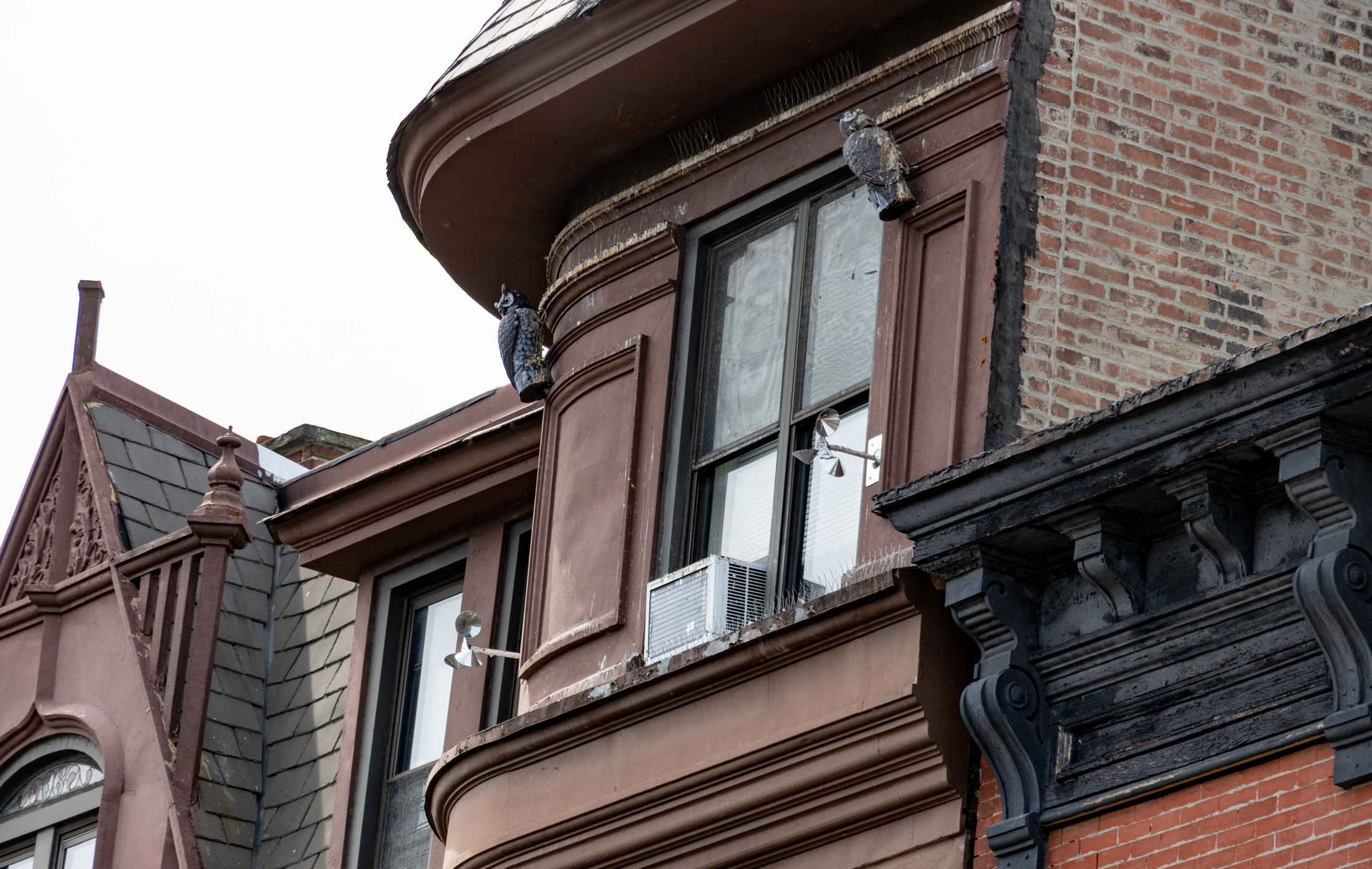The Lockwood Files: Not New York's First Housing Bubble
This is the first in a series of posts by Charles Lockwood, author of the brownstone bible Bricks and Brownstone and the “consummate authority” on New York City brownstone, according to The New Yorker. Tune in on Brownstoner every few weeks for a new installment. In the meantime, you can pick up a copy of…

This is the first in a series of posts by Charles Lockwood, author of the brownstone bible Bricks and Brownstone and the “consummate authority” on New York City brownstone, according to The New Yorker. Tune in on Brownstoner every few weeks for a new installment. In the meantime, you can pick up a copy of his must-have book here.
 Talk of a real estate bubble is so pervasive among New Yorkers—including Brooklyn brownstone owners—that you’d think this generation had invented soaring housing values…and was the first to face the risk of price reversals because of Wall Street gyrations or a national recession. Not true. Look back to nineteenth-century where high housing prices and whiplash-like boom-bust cycles were a regular occurrence in Brooklyn, Manhattan, and other cities. The litany of today’s housing woes—including the risks of real estate bubbles—sound remarkably like the problems of nineteenth-century New York.
Talk of a real estate bubble is so pervasive among New Yorkers—including Brooklyn brownstone owners—that you’d think this generation had invented soaring housing values…and was the first to face the risk of price reversals because of Wall Street gyrations or a national recession. Not true. Look back to nineteenth-century where high housing prices and whiplash-like boom-bust cycles were a regular occurrence in Brooklyn, Manhattan, and other cities. The litany of today’s housing woes—including the risks of real estate bubbles—sound remarkably like the problems of nineteenth-century New York.
Housing Shortage. As the city boomed after the 1825 completion of the Erie Canal, housing was so scarce—and construction workers were often so far behind schedule—that families sometimes moved into unfinished buildings. Well-dressed families are observed to be occupying houses of which the builders do not appear to have accomplished the work so far as to have fully closed them in by doors and windows, declared the Niles Weekly Register in 1825.
At least, those families had a roof over their heads. Some early nineteenth-century New Yorkers, who could not find temporary housing when their leases expired, sought short-term refuge in the city jails.
The transformation of Brooklyn from farms, forest, and a few villages into a rapidly growing city started in the 1820s when this shortage of housing in Manhattan—and the existence of regularly scheduled East River ferry service from the foot of Fulton Street in Manhattan to the foot of Fulton Street in Brooklyn—encouraged New Yorkers to buy lots and build homes on Clover Hill, a bluff overlooking the East River which became known as Brooklyn Heights.
High Prices. Year after year from the 1840s onward, New York newspapers complained that Manhattan was becoming a city of only the rich and the poor. The nineteenth-century brownstones in Brooklyn and Williamsburg, which are so coveted today, were originally built for middle class families who were priced out of Manhattan, and who often viewed Manhattan as overcrowded, dangerous, and full of undesirable immigrants.
New York landlords were just as unpopular in the nineteenth century as they are today. The landlords are ‘masters of the position’, and are careful to let their tenants know as much, complained the New York Herald in 1857. They took advantage of every opportunity to boost rents, particularly during the Civil War when many construction workers were fighting in the Army, not building needed housing.
Middle-class houses that had rented for $900 to $1,000 a year in 1860 fetched $1,200 to $1,500 a year by 1865, and the tenants, reported the New York Times on February 18, 1865, have to go a begging to get them for that. Those Civil War-era high prices drove more Manhattanites to more reasonably priced Brooklyn, where block after block of brownstones were built in the post-Civil War boom, particularly in Cobble Hill, Carroll Gardens, Boerum Hill, Fort Greene, Clinton Hill, the lower streets of Park Slope and Prospect Heights, and the innermost section of today’s Bedford Stuvyesant.
Real Estate Speculation. Today’s speculators, who buy brownstones and condominiums in expectation of even higher prices, are minor league players compared to their nineteenth-century New York brethren.
In the 1790s and afterwards, John Jacob Astor—New York’s first millionaire and founder of the Astor family fortune—was buying farmland several miles north of the city’s built-up area. In 1803, for example, he purchased a 70-acre farm between Broadway and the Hudson River in today’s West Forties—i.e., a large portion of today’s Times Square district.
Some speculators made their fortunes by selling off land to the gullible public, who hoped to make their own profits off risky purchases. During the 1850s boom—when built-up Brooklyn consisted of close-to-Manhattan neighborhoods like Brooklyn Heights, Cobble Hills, and the Fulton Street retail district, speculators were selling building lots in distant neighborhoods which lacked gas lighting, piped water, sewers, and paved streets, not to mention easy access to jobs in downtown Brooklyn or lower Manhattan.
Housing Busts. Every 20 years or so—in 1837, 1857, 1873, and 1893—a New York residential boom ended in a bust, and housing prices collapsed. Real estate speculation has become one of the bubbles of the day, wrote ex-New York Mayor Philip Hone in his diary during the mid-1830s boom. House lots, which had sold for $100 to $150 ten years earlier, rose to upwards of $2,000 by 1836 and 1837, according to British novelist Frederick Marryat, who visited New York as the [real estate] epidemic raged. In Brooklyn, where development did not extend much beyond today’s downtown and Brooklyn Heights, lots were marked out to an extent of fourteen miles, wrote Marryat, and these were eagerly speculated in.
In early 1837, several banks failed, the national economy fell into a depresson, New York real estate prices started declining, and construction dropped precipitously. The evil day has arrived which has been so truly predicted, lamented Philip Hone.
Lots in the West 100s (more than four miles from the outer edge of the city) which had cost $480 apiece in September 1836 were selling for $50 in April 1837. Lots in then-remote sections of Brooklyn like Fort Green or Boerum Hill experienced similar collapses in value. The immense fortunes which we heard so much about in the days of speculation, have melted away like the snow before an April sun, wrote Hone.
In 1873, a crisis on Wall Street triggered the Panic of 1873, a national depression which lasted until 1877, and caused declines in real estate values throughout Brooklyn, Manhattan, and the United States.
A glimpse of the Brooklyn Eagle real estate advertisements during the Panic of 1873 reveals the distress among homeowners, who were forced to sell their homes, and builders who had started construction projects before the crash, but had to sell during the slump.

The bottom ad reads…FOR SALE—HOUSE—AT A SACRIFICE for cash—The two-story and basement, high stoop brick house, 52 Second St., between Smith and Hoyt streets. Only those meaning business need apply. To such, a bargain will be offered.
One hard-pressed owner admitted in a March 27, 1876 advertisement that he needed a quick sale. FOR SALE—HAMILTON STREET—Splendid three-story, basement and cellar brick house; all modern improvements . . . must be sold at once. I want an offer. Great bargain.
The Conselyra & Co. real estate brokers at 679 DeKalb Avenue, near Nostrand Avenue, quite simply, offered a variety of properties at prices to suit the times, according to its March 27, 1876 advertisement.
Even owners of large brownstones in Brooklyn Heights and mansions on Clinton and Washington Avenues felt the pinch of the several-year-long depression. One March 27, 1876 Eagle advertisement offered the very grand 142 Montague Street—a first class four-story and basement brown stone, 25.6 x 56 x 100, frescoed throughout, and in perfect order—at a bargain and on easy terms, if applied for soon. Possession at once.
Today’s Wall Street volatility and the risk of spreading economic troubles must be giving Brooklyn and Manhattan brownstone owners some worries about their property values. Brooklyn brownstones—like Manhattan brownstones, coops, and condos—are some of the few markets in the U.S. not to experience a decline in values this year.
Today’s homeowners should also reflect upon the lessons of past real estate booms and busts. In nineteenth-century Brooklyn and Manhattan, residential mortgages acted as a brake (not accelerator) on real estate speculation, because they required substantial down payments. No zero down mortgages encouraged homebuyers or speculators to buy in ever-escalating nineteenth-century markets.
Significantly, most New York’s housing busts were caused by recessions (or panics) in the national economy in years like 1837, 1857, 1873, and 1893. Today, the reverse could prove true. A continued downturn in today’s U.S. housing markets (including still-resilient Brooklyn and Manhattan) could trigger a nationwide recession.
But there’s a silver lining to the real estate bubbles of the nineteenth century that can also be found today: The periodic bursting of earlier New York’s bubbles ruined many speculators, but they also pushed down residential prices and made housing more affordable for a time. The same thing could happen today.





International buyers are a big factor for NY real estate and I expect that will be a significant contributor to the bottom not necessarily falling out here. Of course NY will be negatively impacted in this market, but not sure the solid brownstone communities will suffer too badly. Even areas like Bed Stuy and Bushwick still have upside potential in this market, for long term buyers.
Yeah, 10.38, I’ not sure I accept your paraphrasing. I was always looking at whether Mr. Lockwood’s description of C19 offered any guide to what would happen now, and merely observed that one fundamental – the supply of new housing, or at least land – is not replicated here. I don’t think New York is immune, though it offers very different conditions to, say, the Inland Empire. Some of the points you lay out very lucidly will cancel out some of the points laid out less lucidly by the renter massive, but to what extent we know not. The fact is, we still have mostly anecdotal evidence for what types of money have been fueling the NYC/Brooklyn real estate boom.
once you said rents weren’t going up, i’m pretty sure you lost everyone reading your post.
rents ARE going up. they will continue to go up. 1/2 percent vacancy and getting tighter every day will determine that.
not you.
And another btw: I’m really not trying to predict doomsday here. None of the above means it’s (necessarily) a bad time to buy. If mortgage rates go up then effective values will go down… but if you get a solid fixed-rate loan with a good rate now, and you can avoid defaulting for the foreseeable future, then a decrease in your on-paper equity doesn’t matter.
Further: inflation is a friend of the homeowner. If problems in the broader economy cause inflation to rise, well, consumer prices, wages and real estate prices have a tendency to catch up in the long term. So as everything gets more expensive, your fixed-rate loan payments will stay the same – effectively turning into a discount for your investment. If you have a two-family, rents will tend to rise as well, which means you’ll be able to cover more of your discounted mortgage with supplemental income.
In other words (and now it seems obvious to me as I write it out), if you adopt a low-risk strategy by choosing smart financing products and a home that is actually affordable, and if you are prepared to stay for a long while, then you’ll be fine.
I guess what bothers a lot of people about this market is that people who are/were awash with cash, and more comfortable with risk, have been making things very difficult for people who are more risk-averse, and shopping for value.
To paraphrase Gringcorp: a market that reached a supply/demand equilibrium suffered cyclical crashes, but a market that cannot reach equilibrium will be stable and immune to crashes. ? I’m no economist but that generalization sounds pretty wrong to me.
Getting to the specifics of the actual market: I think the people who say crazy demand + too little supply don’t understand how huge the condo-building boom has been. The biggest building boom in 40 years, and sure, that’s not too long ago and we don’t have much ability to compare it to the city’s expansion in the 19th century; but there have been three pullbacks in the RE market just in those 40 years, and they occurred without any accompanying supply glut.
Of course New York was spared the housing bust suffered by the rest of the country (thanks for an utterly uninformative article this weekend, NYTimes) – buyers in NYC get their money from different places than buyers in the rest of the country. As the national RE market collapsed, the Dow hit 14,000. And guess what: NYC RE prices stayed high. Duh.
Well, now the Dow’s at 13,000 and going nowhere fast. Hedge fund/private equity/Ibanker income will be high again this year, helping NYC prices stay solid through Autumn ’08. But then? There’s been a LOT of recklessly speculative investment in the past 2, 5, even 10 years – most recently in risky mortgage products and in the secondary mortgage markets. The Fed can’t prop up markets indefinitely. Lots of things might happen that will affect us. Hedge funds are going to face big problems in ’08-’09. Longer term, there’s going to be a big private equity bust that’s not even on many radar screens yet. (As I understand it, much private equity is fueled by capital left over after the dot-com bust, which HAD to be invested somewhere even though there were fewer places to invest it. Many very smart and slick individuals are going to get incredibly rich and then cut and run, and then the whole thing is going to crash.)
Other possibilities: the dollar’s value could rise. crime could increase. The city’s population could stabilize. Mortgage rates could go up (the recent cut was very much a short-term solution). Basically, the city is doing better now in almost every way than it’s ever done before, in terms of conditions that affect the local RE market… but things change, and since everything’s already great, almost ANY change is likely to be for the worse.
And btw 11:27, rents are not going to rise substantially in the near future, because wage increases have no matched real estate price increases. Mean wages may be rising because the rich have been getting so much more rich, but the super-rich don’t generally rent. Cut out the rich penthouse-condo-buyers and the people on public assistance, and look at the wages of everyone else; like it or not, rents are tethered to that number, and that number has been relatively stagnant when compared to real estate sale prices in the last ten years. Normal people can only afford to spend so much of their take-home pay on rent.
In my co-op we just use the old formula that no more 30% of total gross income should go to pay mortgage and maintenance. If you can’t make that threshold, we won’t even meet with you. The realtors know that. I think coops like mine have had the right idea all along. “If you can’t afford it, you shouldn’t buy it”.
anon 5:37pm
I think we are mostly talking about condos, not coops.
Yes?
most co-op boards wouldn’t approve teh 2-3 yr ARMs so I’m not sure they these apply to this market
2:44, a lot (majority?) of subprime mortgages written in the last few years were 2/28’s or 3/27 ARMS, they had a low teaser rate for 2-3 years and then reset to a fully indexed rate. People are expecting bad things when these reset.